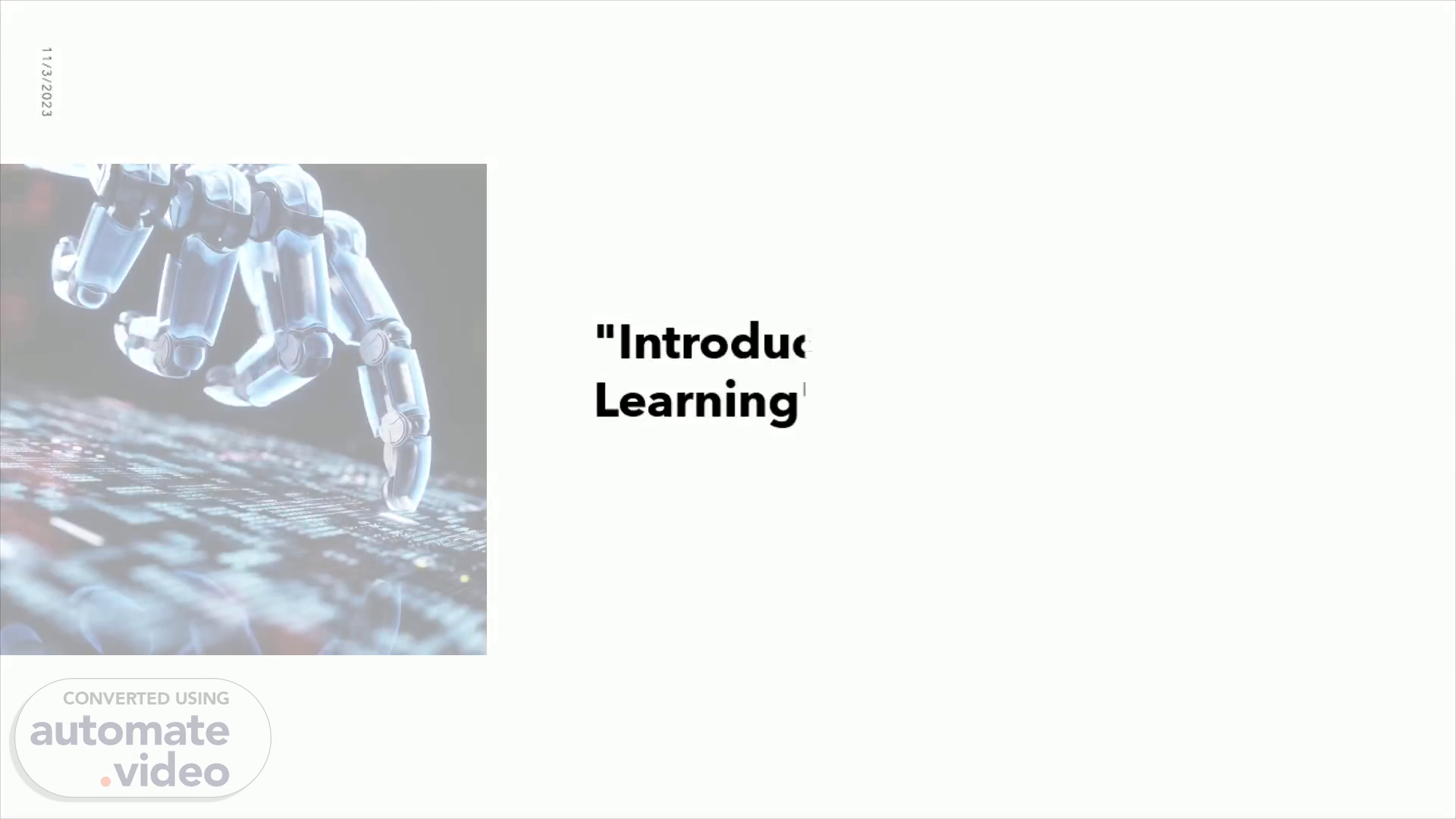
"Introduction to Machine Learning"
Scene 1 (0s)
"Introduction to Machine Learning". Unlocking the Power of Data.
Scene 2 (10s)
Introduction. 11/2/2023. Sample Footer Text. 2. Definition of Machine Learning Machine Learning is a branch of AI that uses data to teach computers how to perform tasks without being explicitly programmed Importance of Machine Learning in the modern world ML is pivotal in areas like healthcare, finance, e-commerce, and more, enabling automation, personalization, and insights A brief history of Machine Learning From early AI concepts and expert systems to the recent surge in deep learning with neural networks.
Scene 3 (32s)
Types of Machine Learning. Supervised Learning ML with labeled data; it learns to make predictions or classify data Example: Email spam classification based on labeled spam and non-spam emails Unsupervised Learning ML on unlabeled data to find patterns and structures Example: Clustering customer data to identify market segments Reinforcement Learning ML where an agent learns to maximize a reward through actions Example: Training a game-playing AI to maximize in-game rewards.
Scene 4 (55s)
Types of Machine Learning. Semi-Supervised Learning Combines labeled and unlabeled data for training Useful when obtaining labeled data is costly Self-Supervised Learning ML where models generate labels from the data Common for pre-training deep neural networks.
Scene 5 (1m 10s)
The Machine Learning Process. Data Collection and Preprocessing Gathering, cleaning, and formatting data for ML Example: Removing missing values from a dataset Model Selection Choosing the right ML algorithm for a task Typically requires cross-validation and hyperparameter tuning Training and Testing The model learns from training data and is evaluated on testing data Evaluation Metrics Metrics like accuracy, precision, recall, F1 score, and ROC curves assess model performance Iteration and Optimization The iterative nature of ML involves refining models and tuning hyperparameters for better performance.
Scene 6 (1m 35s)
Key Machine Learning Algorithms. Linear Regression Predicting a continuous target based on input features Example: Predicting house prices based on square footage Decision Trees and Random Forest Decision trees classify or regress data; random forests improve accuracy Example: Decision trees for customer churn prediction Support Vector Machines Finding a hyperplane to separate classes Example: Classifying spam and non-spam emails Neural Networks Complex, layered networks used for deep learning Example: Image recognition in convolutional neural networks.